28 Iconic North American Pizzas Everyone Should Taste
North American pizzas represent a delightful culinary canvas where flavors dance and creativity knows no bounds.
Regional influences have transformed this beloved dish into a spectacular gastronomic journey across diverse palates.
Crispy crusts, vibrant sauces, and innovative toppings showcase the dynamic spirit of pizza culture.
Passionate chefs continuously push boundaries, experimenting with unexpected ingredient combinations that surprise and satisfy hungry diners.
Comfort food meets artistic expression through these circular masterpieces that connect communities and spark conversations.
Cultural traditions blend seamlessly with contemporary techniques, resulting in unique interpretations that reflect local tastes and preferences.
Pizza has become more than a meal - it's a shared experience that brings people together.
These 28 popular North American pizzas will tantalize your taste buds and expand your culinary horizons:
Popular North American Pizzas for Any Night
Pizzerias across North America create pies to please every preference.
Whether thin, deep-dish, or gluten-free, the crust and toppings combine for the ultimate pizza night experience.
Apizza
Apizza represents a distinctive New Haven, Connecticut pizza style distinguished by its extended baking in scorching coal ovens and exceptionally moist dough.
Frank Pepe, an Italian baker, pioneered this unique pizza variation with minimal traditional toppings like grated cheese, garlic, and anchovies or tomatoes.
Coal-fired ovens create its signature thin, black, charred crust that paradoxically delivers a surprisingly chewy and flavorful experience.
Hand-formed pizzas reject uniform shapes, embracing an organic, artisanal approach to pizza making.
Each pizza emerges with sparse ingredients that highlight the dough's complex texture and intense flavor profile.
New Haven's signature style differs dramatically from traditional pizza preparations.
Irregular shapes and carefully selected toppings reflect the pizza's rustic Italian immigrant origins.
Passionate pizza makers continue Pepe's legacy, preserving this distinctive culinary tradition.
Pepperoni Pizza
Pepperoni pizza dominates American cuisine as a spicy salami-topped sensation originating from Italian-American culinary innovation.
Surprisingly, pepperoni means "large pepper" in Italian but now describes a zesty meat blend of beef and pork seasoned with distinctive spices.
Popularized in the 1950s, this pizza variation quickly became a nationwide favorite across restaurant menus and home kitchens.
Mozzarella cheese, tangy tomato sauce, and crispy pepperoni slices create its signature flavor profile.
Traditional preparation involves spreading tomato sauce on a thin or thick crust and generously layering spicy meat rounds.
Mass appeal has transformed this simple dish into an iconic American staple.
Families and friends continue to enjoy pepperoni pizza as a classic comfort food that satisfies diverse taste preferences.
Stromboli
Stromboli are rolled Italian-American sandwiches packed with savory meats and melted cheese, originating from suburban Philadelphia in the 1950s.
Pizza dough wraps around layers of salami, pepperoni, bresaola, and capocollo with mozzarella creating a hearty meal.
These portable turnovers differ from calzones by their signature rolled shape and rectangular form.
Marinara sauce traditionally accompanies the dish instead of being baked inside.
Bread or pizza dough serves as the wrapper for the delicious ingredients.
Named after Roberto Rossellini's movie, stromboli quickly became a popular street food.
Each slice reveals a spiral of flavorful ingredients waiting to be enjoyed.
New York-Style Pizza
New York-style pizza represents a classic Italian-American culinary innovation featuring an iconic large, thin, and foldable slice with crispy edges.
Immigrants from Naples introduced this pizza style to New York City in the early 1900s, pioneering its unique characteristics at Lombardi's first pizzeria.
Mineral-rich NYC tap water contributes to the distinctive crust texture that makes this pizza special.
Mozzarella cheese covers the base, topped with a robust tomato sauce seasoned with garlic, oregano, and crushed red pepper.
Additional ingredients like vegetables or sausage can be added for extra flavor.
Slices are intentionally wide and large, designed for convenient street eating.
Each slice can be easily folded in half, making it perfect for quick consumption.
Traditional preparation methods ensure a crispy yet pliable crust that distinguishes this pizza from other regional styles.
Garlic Fingers
Garlic fingers are a beloved pizza-like street food originating in Atlantic Canada, featuring rectangular pizza dough strips smothered in melted cheese, garlic butter, and parsley.
Maritime restaurants and home kitchens craft these savory treats by baking dough until golden and crispy with generous cheese coverage.
Restaurants often serve garlic fingers alongside traditional pizza as a complementary side dish.
Diners customize their fingers with optional toppings like bacon, dill, or vegetables.
Multiple dipping sauces such as Donair or marinara enhance the flavor profile.
These crispy, cheesy strips differ from standard pizza by their unique finger-like shape and concentrated garlic butter coating.
While similar to pizza, garlic fingers represent a distinct regional culinary specialty.
Atlantic Canadian communities have embraced this comfort food as a popular casual dining option.
Sicilian Pizza
Sicilian pizza features a thick, rectangular crust with a crispy bottom and pillowy interior that originated from Sicilian immigrants in New York City.
Bakeries modified traditional sfincione by adding inexpensive mozzarella cheese to create a unique American adaptation.
Tomato sauce typically covers the cheese, ensuring a well-cooked base with rich flavor layers.
Baked in large sheet pans, this pizza offers generous portions with a satisfying texture different from traditional round pizzas.
Robust in size and taste, Sicilian pizza became popular across northeastern United States, especially in New York, New Jersey, Michigan, Connecticut, Rhode Island, and Massachusetts.
Italian-American communities embraced this hearty style as a staple street food and restaurant menu item.
Generous toppings and thick crust make it a filling meal for groups and families.
Immigrants transformed their traditional recipe into an iconic American pizza style that continues to delight pizza fans nationwide.
Chicago Thin Crust Pizza
Chicago thin crust pizza dominates Midwestern street scenes with its signature cracker-crisp base, square-cut slices, and distinctive zesty herbed tomato sauce.
Locals prefer this style over folding techniques, often quipping "fold your laundry, not your pizza" to emphasize its unique structure.
Mozzarella cheese generously covers the surface, creating a rich foundation for toppings like crumbled Italian sausage, pepperoni, and crispy bacon.
Prosciutto and various vegetables add depth to this regional favorite.
Restaurants across Illinois serve this style with pride, cutting slices into precise squares known as "tavern-style" or "party cut".
Chicago thin crust embodies Midwestern comfort food with its crisp texture and bold flavor profile.
Neighborhood pizzerias continue to perfect this iconic dish, ensuring its place in local culinary tradition.
Detroit-Style Pizza
Detroit-style pizza delivers a square-shaped thick crust experience with crispy edges and unique ingredient layering.
Originating from Buddy's Rendezvous in 1946, this regional specialty features cheese pressed directly onto the dough before adding spiced tomato sauce.
Pepperoni remains the most popular topping, often placed strategically under or over the cheese layer.
Steel automotive parts trays originally inspired the pizza's signature rectangular shape in Detroit's automotive industry neighborhoods.
Crisp caramelized cheese edges create a distinctive crunch that sets this style apart from traditional round pizzas.
Michigan restaurants first popularized the style, which now appears in pizzerias nationwide.
Beer or wine perfectly complements the rich, hearty slice.
Generous portions and bold flavors define this Motor City pizza innovation.
Greek-Style Pizza
Greek pizza bursts with Boston immigrant flavor, combining thick, wettish dough and crispy pan-fried edges that make it uniquely different from traditional Italian-style pizzas.
Oregano-rich tomato sauce and greasy cheese define its signature taste profile.
Bakers create this distinctive pizza in heavily greased pans, generating a lacy, crunchy border and crisp bottom crust.
Authentic toppings include feta cheese, Kalamata olives, and artichokes, which enhance its Mediterranean character.
Pepperoni serves as an optional additional topping for meat lovers.
Greek immigrants developed this style in Boston during the late 1960s, introducing a new pizza variation to American cuisine.
Freshness matters most with this pizza, as reheating diminishes its original texture and taste.
Consuming the pizza within fifteen minutes of baking guarantees the best eating experience.
Chicago-Style Deep Dish Pizza
Chicago-style deep dish pizza reigns supreme as a revolutionary American culinary creation with its signature thick, high-walled crust holding layered ingredients in an inverted design.
Originating from Pizzeria Uno in 1943, this hearty pizza was crafted by Ike Sewell and Ric Riccardo as a bold reimagining of traditional Neapolitan pizza.
Massive slices showcase a golden, crispy exterior with a buttery crust that supports substantial layers of cheese, meats, and tangy tomato sauce.
Italian immigrant influences shaped this distinctive dish, transforming a simple meal into a Chicago cultural icon.
Restaurants across the United States now celebrate its unique style, with passionate fans dedicating an entire national day on April 5 to honor this innovative pizza.
Thick and substantial, each slice offers a rich, filling experience far different from thin-crust varieties.
Millions of diners enjoy this heavyweight pizza that embodies American culinary creativity.
Grilled Pizza
Grilled pizza originates from Providence, Rhode Island, featuring a unique cooking method that transforms traditional pizza preparation by directly grilling dough on hot coals.
Chefs stretch the pizza dough and place it directly on grill grates, cooking one side until charred and crispy.
Cooks then flip the dough, adding cheese first and sauce second before returning it to the grill.
High heat creates a smoky, crisp crust with distinct char marks and caramelized edges.
Toppings get melted quickly while maintaining a fresh, intense flavor profile.
Home grillers and pizza enthusiasts love this method for its quick cooking time and outdoor cooking experience.
Ingredients like fresh mozzarella, basil, and olive oil enhance the grilled pizza's rustic appeal.
Restaurants and backyard barbecues have embraced this innovative pizza style as a summer favorite.
Grandma Pie
Grandma pie radiates simplicity and rustic charm as a distinctive New York-style pizza crafted with minimally proofed dough, creating an intentionally thin and dense crust that bakes to crispy perfection in rectangular metal pans.
Home cooks in Long Island pioneered this pizza style during the 1960s as a quick homemade meal that mimicked traditional Italian flatbreads.
Rectangular slices showcase a crisp bottom and slightly thicker edges that provide satisfying crunch with each bite.
Toppings typically include classic marinara sauce, mozzarella cheese, and basic ingredients like fresh basil or oregano.
Metal pan baking ensures even heat distribution and caramelized edges that distinguish grandma pie from standard round pizzas.
Minimal rising time for the dough contributes to its unique texture and concentrated flavor profile.
Generations of Italian-American families have embraced this unpretentious pizza style as a comforting staple.
New England Bar Pizza
Bar pizza emerges as a compact New England specialty featuring a uniquely thin, crispy crust baked in an oily rimmed pan with distinctive burnt edges.
Massachusetts restaurants and home kitchens craft this small pizza with a signature lacy dough made from all-purpose flour, yeast, olive oil, sugar, and salt.
Generous cheese coverage extends completely to the pizza's edges, blending mozzarella and cheddar in a rich layer.
Tomato sauce provides a classic base underneath the cheese blend.
Olive oil drizzles add extra flavor and crispness to the crust.
Massachusetts South Shore communities particularly embrace this pizza style.
Small taverns and neighborhood restaurants popularized bar pizza during mid-20th century dining trends.
Working-class neighborhoods first developed this affordable, quick meal that remains a beloved regional staple.
California-Style Pizza
California pizza blends New York and Italian thin crust styles with innovative toppings that transform traditional pizza expectations.
Ed LaDou and Chez Panisse chefs pioneered this style in 1980, introducing unconventional ingredients like barbecue chicken, shrimp, and goat cheese.
Signature crusts remain light and airy, providing a delicate foundation for adventurous flavor combinations.
California pizza breaks standard pizza rules by incorporating unexpected elements such as peanut sauce and pineapple.
Wolfgang Puck popularized the concept through his famous restaurants, spreading the culinary trend nationwide.
Restaurants like California Pizza Kitchen further established the style as a mainstream dining option.
Gourmet ingredients and creative approaches distinguish these pizzas from classic Italian and American versions.
Fusion techniques and bold flavor profiles continue to define California pizza's unique culinary identity.
Stuffed Pizza
Stuffed pizza represents a hearty Chicago-style pizza innovation featuring two layers of dough filled with abundant cheese and savory ingredients.
Chicago pizzerias pioneered this pizza style in the late 1970s as a substantial variation of traditional deep-dish pizza.
Bakers create the unique pizza by layering a thick bottom crust with generous cheese and meat or vegetable fillings.
Another thin dough layer covers the ingredients, creating a signature sealed appearance with strategic slits for steam release.
Marinara sauce typically crowns the top layer, adding moisture and rich flavor to the dense pizza.
Wisconsin mozzarella provides the primary cheese component, melting into a creamy interior.
Commercial pizza chains like Giordano's helped popularize this substantial pizza style across the United States.
Restaurants serve stuffed pizza as a filling meal that satisfies serious hunger with its multi-layered design.
St. Louis-Style Pizza
St. Louis-style pizza revolutionizes traditional pizza with its cracker-thin, crispy crust cut into distinctive squares instead of triangular slices.
Originating in Missouri, this regional specialty features Provel cheese, a unique processed blend of Provolone, Swiss, and white Cheddar that melts smoothly across the surface.
Restaurant chains like Imo's popularized this style, spreading its popularity throughout the Midwestern United States.
Missouri locals embrace the pizza's unconventional shape and cheese combination as a signature culinary creation.
Restaurants typically load the crisp crust with classic toppings like pepperoni, sausage, and vegetables.
Provel's tangy, creamy texture distinguishes this pizza from standard mozzarella-topped varieties.
Diners appreciate the lightweight, crunchy base that differs from traditional thick pizza crusts.
Restaurants across St. Louis continue to celebrate this unique pizza style as a beloved regional specialty.
Hawaiian Pizza
Hawaiian pizza combines ham, cheese, and pineapple on a crispy pizza crust, sparking worldwide culinary debates about fruit's place on savory dishes.
Canadian restaurateur Sam Panopoulos first invented this unique pizza in Chatham, Ontario during the mid-1960s at his Satellite Restaurant.
Unexpected flavor combinations defined Panopoulos's experimental approach to cooking.
Sweet pineapple chunks contrast sharply with salty ham and melted cheese.
International pizza lovers continue to argue passionately about this controversial topping.
Some restaurants embrace the pizza while others reject its unconventional ingredients.
North American pizza chains widely offer Hawaiian pizza as a standard menu option.
Despite its name, this pizza has zero connection to Hawaiian cuisine.
Colorado-Style Pizza
Colorado mountain pie craves adventurous pizza lovers with its signature braided thick crust that acts like a protective wall for abundant toppings.
Originated at Beau Jo's restaurant in Colorado, this unique pizza style allows customers to customize their pie from over 50 topping combinations.
Gas-powered ovens bake these pizzas quickly in about 10 minutes, unlike traditional deep-dish varieties that require 40-minute baking times.
Honey replaces sugar in the dough, creating a distinctively sweet undertone.
Customers traditionally drench the braided crust edges in honey served on the side after finishing their meal.
Weight becomes the measurement for these pizza creations due to their generous topping quantities.
Different from Chicago-style pizzas, Colorado mountain pie offers a faster cooking method and more interactive dining experience.
Unique regional characteristics make this pizza a true Colorado culinary signature.
Windsor-Style Pizza
Windsor style-pizza represents a distinctive Canadian culinary innovation born in Windsor, Ontario, characterized by its unique layering technique where toppings rest atop melted mozzarella cheese.
Galati cheese provides the signature mozzarella base, while oregano-infused tomato sauce delivers robust flavor across the pizza's medium-thin crust.
Shredded pepperoni sticks ensure consistent meat distribution, guaranteeing pepperoni in every single bite.
Stone deck ovens with cornmeal create an extra-crispy foundation for this regional specialty.
Green peppers and bacon offer optional additional toppings for enhanced variety.
Although its precise origin remains uncertain, Sam's Pizzeria, Volcano Pizzeria, and Mario's Restaurant are considered potential creators of this distinctive pizza style.
Community Museum records suggest multiple Windsor establishments may have contributed to its development.
Tomato Pie
Tomato pie embodies a New Jersey culinary classic that flips traditional pizza expectations by placing cheese underneath and tomato sauce on top.
Italian immigrants from Sicily introduced this unique pizza-like creation during the 19th century in northeastern United States communities.
Thin, crispy crust serves as the foundation for this savory specialty that resembles an inverted pizza.
Bakeries and pizzerias across New Jersey have perfected this regional delicacy over generations.
Mozzarella cheese covers the base, creating a melted foundation for tangy tomato sauce.
Cold or room temperature versions remain popular among locals and food enthusiasts.
Generations of families have enjoyed this simple yet distinctive dish as a staple of New Jersey's Italian-American cuisine.
Quad City-Style Pizza
Quad Cities pizza stands out as a distinctive Midwestern culinary creation featuring an unconventional rectangular strip-cut design with a uniquely spicy character.
Originating from Iowa and Illinois, this pizza distinguishes itself through a malt-infused crust that delivers a subtle nutty undertone.
Chili and cayenne pepper flakes create a bold sauce that adds unexpected heat to each slice.
Bakers carefully layer toppings across the entire surface before cutting the pizza into long, narrow strips instead of traditional triangular wedges.
Malt syrup gives the thick crust a rich, complex flavor profile that sets it apart from standard pizza styles.
Restaurants throughout the Quad Cities region pride themselves on maintaining this special pizza tradition.
Diners appreciate the hearty portion sizes and distinctive rectangular shape.
Meat and cheese toppings complement the spicy sauce and malty crust, creating a memorable regional specialty.
Pictou County Pizza
Pictou County pizza represents a distinctive Nova Scotian culinary tradition featuring a uniquely thick, chewy dough layered with a signature spicy brown sauce and premium Halifax-made Brothers' pepperoni.
Maritime locals passionately defend this regional specialty, which stands out for its robust flavor profile and distinctive preparation method.
Pizza enthusiasts recognize its special texture and intense sauce as hallmarks of authentic Pictou County preparation.
Brothers' pepperoni provides an extra layer of flavor that sets this pizza apart from standard varieties.
Frozen versions of this pizza ship nationwide, allowing Canadians to enjoy the regional delicacy anywhere.
Nova Scotia restaurants compete to create the most authentic version of this beloved pizza.
Regional pride surrounds this unique pizza style, which continues to gain popularity beyond its original coastal community.
Cuban Pizza (Pizza Cubana)
Cuban pizza is a hearty street food marvel born from Cuban-Italian culinary fusion.
Thick, slightly sweet dough distinguishes this pizza from traditional styles, creating a unique comfort food experience.
Baked toppings typically include ham, chorizo, pepperoni, shrimp, ground beef, and lechon asado, complemented by gouda or mozzarella cheese.
Tomato sauce provides a foundational flavor that enhances every bite.
Originating in Havana and perfected at Varadero Beach, this pizza style spread to Miami through its inventor.
Locals often fold the pizza like a sandwich or order it sliced (apicada).
Miami and Cuban communities continue to celebrate this delicious cross-cultural creation.
Pizza-Ghetti
Pizza-ghetti combines two classic comfort foods into one unique Canadian dish originating in Quebec.
Small pizzerias and casual restaurants across Quebec serve this distinctive meal featuring half a pizza alongside spaghetti with tomato sauce.
Quebecers have embraced this quirky fusion as a casual dining staple since the mid-20th century.
Restaurants typically slice the pizza diagonally to create an appealing presentation.
Diners can enjoy two beloved pasta and pizza flavors in a single plate.
Street vendors and family restaurants popularized this unexpected combination.
Affordable and filling, pizza-ghetti reflects Quebec's creative culinary approach to comfort food.
Pizza Cake
Pizza cake revolutionizes traditional dessert and pizza experiences by stacking multiple pizza layers inside a cake-like structure.
Boston Pizza introduced this innovative concept during their 2014 Pizza Game Changers campaign, inviting public participation in menu creation.
Canadian food developers designed the unique dish as a layered culinary marvel combining pizza ingredients with cake-style presentation.
Thick pizza dough forms the base and sides of the "cake," creating structural integrity for multiple pizza layers.
Melted cheese, pepperoni, and classic pizza toppings alternate between dough sections, generating a multi-dimensional flavor profile.
Diners can slice the pizza cake like a traditional cake, revealing intricate layers of savory ingredients.
Each slice offers a complete pizza experience with crispy edges and rich, melted center components.
Social media and food enthusiasts quickly embraced this unconventional pizza interpretation as a bold gastronomic experiment.
Pizza Strips
Rhode Island pizza strips are uniquely saucy bread squares served at room temperature without cheese, originating from local bakeries rather than traditional pizza restaurants.
Thick focaccia-style dough forms the base of these distinctive squares, generously covered in bright red tomato sauce with occasional fresh herb hints.
Bakeries prepare these strips in large baking trays, creating a substantial and hearty bread slice.
Rhode Island residents frequently serve pizza strips at casual gatherings like birthday parties and cookouts.
Street festivals and community events often feature these simple yet satisfying bread squares.
Generations have enjoyed this straightforward comfort food as a regional snack.
Tomato sauce provides the primary flavor profile, making these strips different from conventional pizza.
Family recipes and neighborhood bakery traditions continue to preserve this distinctive Rhode Island culinary tradition.
Old Forge Pizza
Old Forge pizza represents a distinctive American pizza style emerging from Pennsylvania's former mining region, characterized by rectangular metal pan baking and a uniquely lighter crust that becomes crispy on bottom yet chewy in center.
Regional pizzerias serve this specialty in "trays" instead of traditional pies, cutting distinctive rectangular portions rather than traditional triangular slices.
Two primary varieties dominate: red and white styles with characteristic preparations that distinguish them from standard pizza traditions.
Red versions feature a slightly sweet tomato sauce potentially including diced onions and a complex cheese blend combining American, cheddar, and mozzarella cheeses.
White versions create a stuffed experience with double layers of dough encasing multiple cheese types and optional vegetable fillings like broccoli or spinach.
Herb garnishes such as rosemary sometimes accent the white style's top layer.
Strict regional preparation methods ensure authentic preparation maintains traditional techniques.
Cheese selection and baking approach make Old Forge pizza a unique northeastern Pennsylvania culinary signature.
Ackee And Saltfish Pizza
Jamaican ackee and saltfish pizza is a bold Caribbean fusion dish merging traditional Italian pizza with iconic Jamaican flavors.
Crispy pizza crust serves as a foundation for classic pizza ingredients like tomato sauce, melted cheese, and sliced onions.
Authentic versions feature cooked ackee and saltfish as a distinctive topping, transforming an ordinary pizza into a unique island-inspired meal.
Jamaican home cooks typically prepare this pizza with slightly melted cheese for optimal texture.
Salt fish provides a rich, savory protein component that complements the creamy, buttery ackee fruit.
This pizza reflects Jamaica's culinary creativity by blending international and local ingredients.
Restaurants across Jamaica serve variations of this innovative dish, celebrating national food culture.
Street vendors and small eateries often feature this distinctive pizza as a popular street food option.
What Toppings Are Most Common in North American Pizzas?
North American pizzas boast a wide range of popular toppings that cater to diverse tastes:
This variety allows pizza lovers to customize their pies, creating endless flavor combinations.
How Does Crust Thickness Define Pizza Style in North America?
Crust thickness plays a key role in distinguishing pizza styles across North America:
Crust choice affects the overall texture and eating experience, making it a defining characteristic of regional pizza styles.


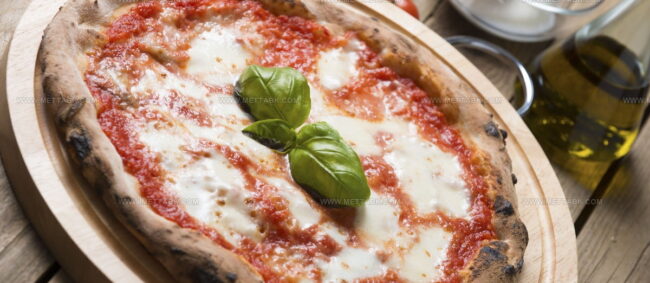



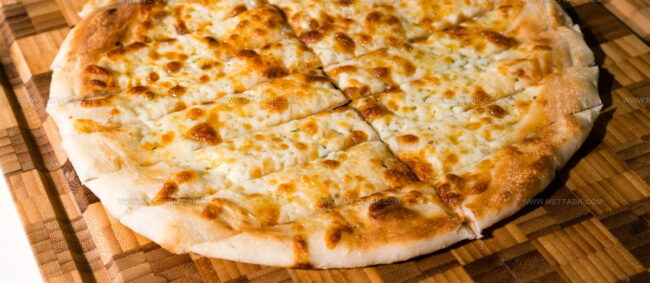
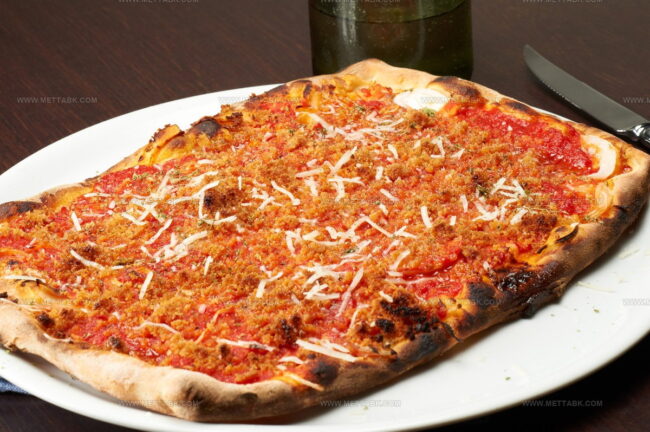








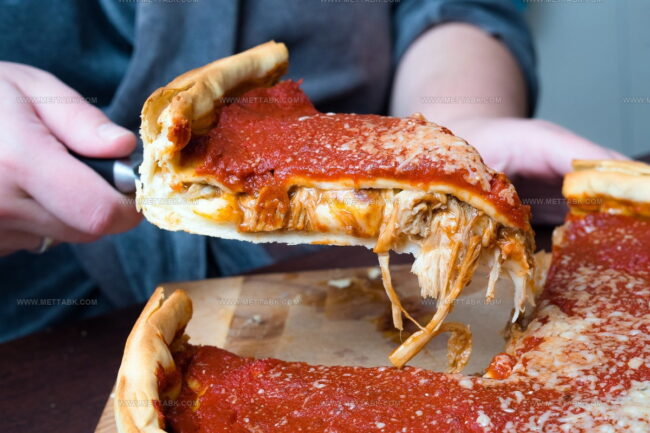
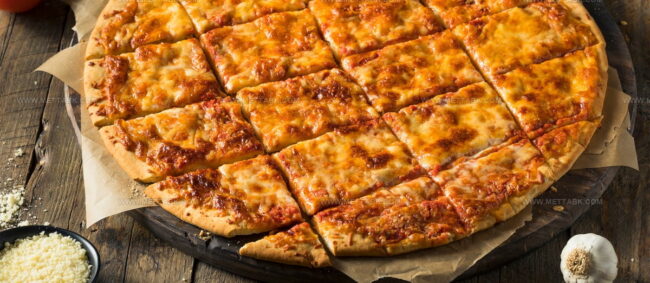

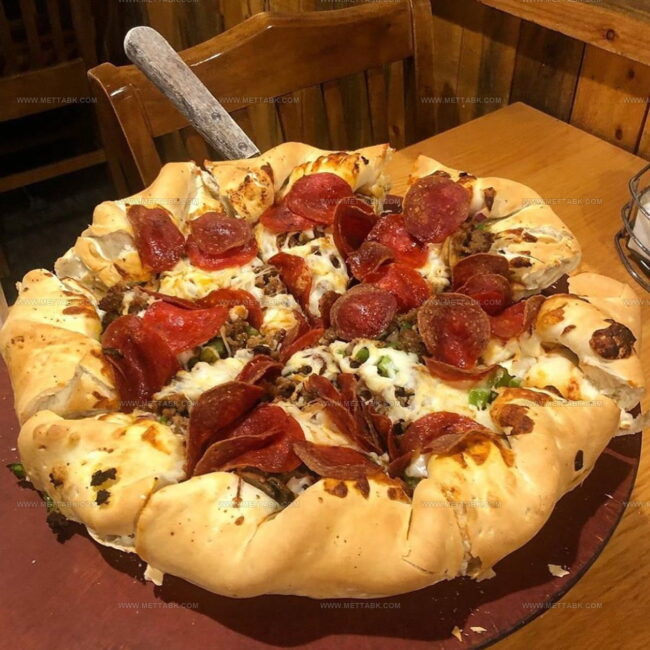




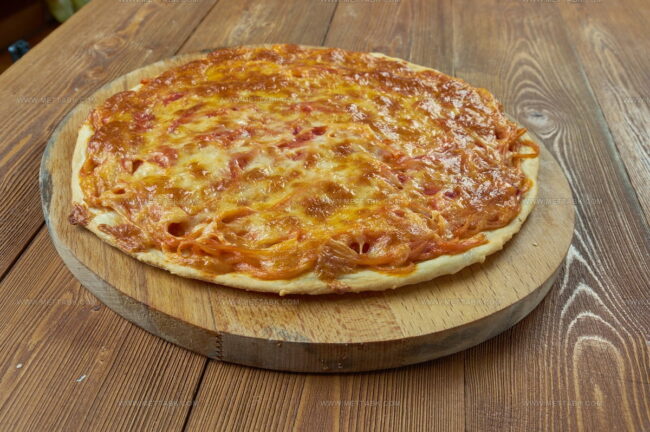
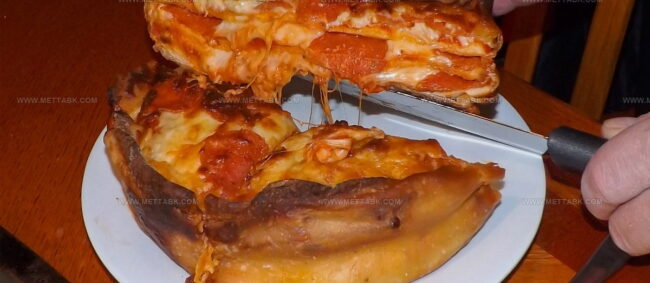
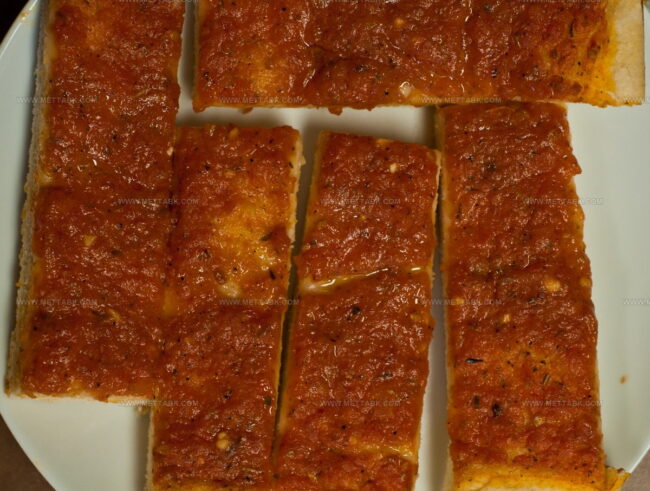


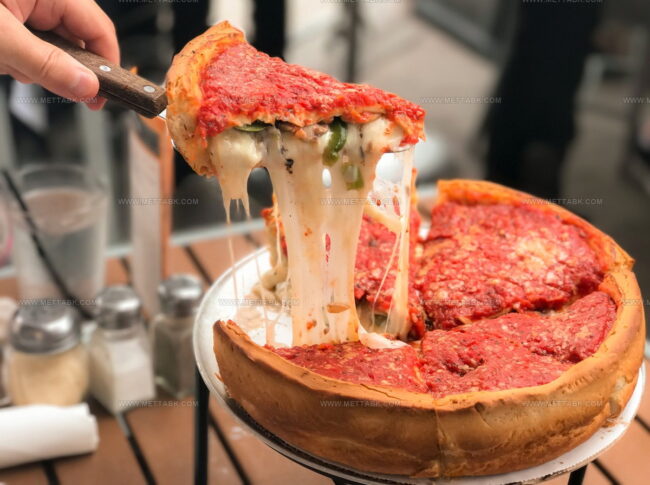
Clara Bennett
Contributing Recipe Developer & Food Writer
Expertise
Baking and Pastry Development, Gluten-Free and Allergy-Friendly Recipe Creation, Culinary Storytelling and Food Journalism, Recipe Testing and Standardization, Southern Comfort Foods and Modern Twists
Education
Sullivan University – National Center for Hospitality Studies
Associate Degree in Culinary Arts
Focus: Baking and Pastry Arts, Recipe Testing, and Culinary Journalism.
Clara specialized in crafting desserts that blend classic Southern comfort with modern techniques, while developing strong writing skills to tell the story behind every dish.
Lane Community College (Certificate Program)
Certificate in Food Writing and Photography
Focus: Culinary storytelling, recipe formatting, food styling, and visual presentation.
Clara’s love of baking started young, powered by homemade pies, biscuits, and stories passed around the family table.
After earning her degree at Sullivan University and a food writing certificate at Lane Community College, she turned her passion into a craft: sharing recipes that are simple, soulful, and always full of heart.
She’s big on bold flavors, flexible ideas, and creating sweets that fit any table (yes, even if you’re gluten-free). When she’s not baking, you’ll find her wandering farmers’ markets, styling food for the next photo shoot, or working on her ever-growing recipe journal.